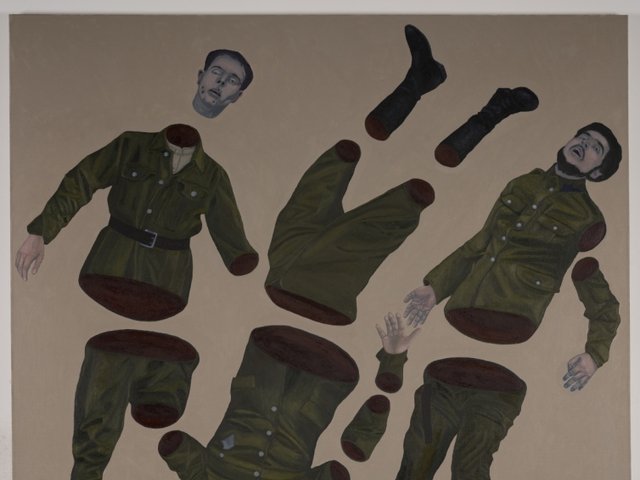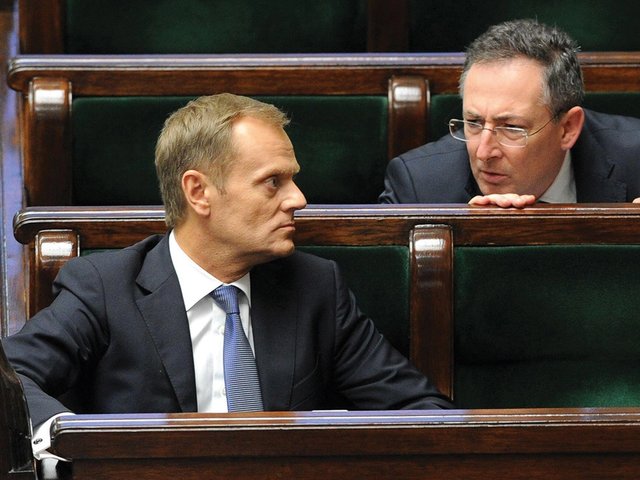A project by the Polish artist Ignacy Czwartos, chosen to represent Poland at the 2024 Venice Biennale, is facing a backlash from critics who say it is too closely aligned with the agenda of the country's ruling Law and Justice (PiS) government.
On 31 October, Poland’s Ministry of Culture confirmed that it will present an exhibition by Czwartos at the country’s national pavilion at the Biennale. The announcement comes at a time when Poland is waiting to see what form its next government will take, following last month’s general election, in which PiS emerged as the largest party, but failed to win a majority. Most political observers expect that the government, as a result, will soon be replaced by one formed by a coalition of opposition parties, headed by Donald Tusk.
In a proposal document submitted to the Biennale, the exhibition, Polish Practice in Tragedy. Between Germany and Russia, is introduced as “a profound reflection by a contemporary Polish artist on the tragic history of the 20th century.” The document suggests it will “accuse”, “provoke” and ask “unpleasant questions”, and that it intends to explore “the scene of the Polish tragedy” that emerged between “the two bloody totalitarianisms” of Nazi Germany and Soviet Russia. Works on show will include "dozens of canvases… with depictions of Polish victims and perpetrators of crimes” relating to the two regimes. There will also be boxes intended to resemble the coffins of the ancient Sarmatians—people of Iranian origin who migrated into eastern Europe in antiquity and who played an important historical role in the construction of national identity in Poland, particularly among nobles in the 17th century.
Czwartos was recommended by a jury convened by Warsaw’s Zachęta National Gallery of Art. While it is normal for Zachęta, as the custodian of the Polish pavilion, and the Ministry of Culture to oversee the selection for Venice, those objecting to Czwartos’ project say it follows the narrative of the PiS government and its “right-wing, martyrdom-oriented cultural policy”.
Those criticising Czwartos’ nomination include former Zachęta staff and three members of the museum’s jury, Jagna Domżalska, Joanna Warsza, Karolina Ziębińska-Lewandowska. The three jurors collectively noted their disapproval in a “votum separatum”, dated 18 September, stating that, in contrast to the Biennale’s universal outlook, "The selected project presents, in our opinion, exactly the opposite image of Poland, as a homogeneous, unopen country focused only on itself and on speaking from the position of a victim. Nor does the project in any way reflect Poland’s contemporary art scene.” Despite their objections, the other eleven members of the jury all voted in favour of Czwartos’ project.
In a statement sent to The Art Newspaper this month, critics of the project added that the “Polish-centric cultural policy” they perceive as conveyed by the exhibition “is based on a sense of injustice, alienation and never-to-be-redeemed guilt, as well as the need for constant reminding of the crimes committed against the Polish people in history.”
The statement suggests the show is further compromised by the fact Zachęta’s director, Janusz Janowski, curated a similar exhibition of work by Czwartos earlier this year. It also points out that Janowski’s co-curator for that exhibition was Piotr Bernatowicz, who will act as one of the curators for the project in Venice. Both Janowski and Bernatowicz—who is the director of another of Warsaw’s leading institutions, the Ujazdowski Castle Centre for Contemporary Art—were appointed by the PiS government. Janowski was also the chair of the jury that selected Czwartos for the Biennale.
Speaking to The Art Newspaper, Domżalska, Warsza and Ziębińska-Lewandowska said of the exhibition: “To us the decision to select Ignacy Czwartos seems like a tragic Endspiel after eight years of right-wing rule, but it is happening. It is even more tragic, that now, when there is finally again some optimism in Poland after elections, we need to be confronted with the worst ghosts, angsts and phobias. We regret that after the most open, welcoming, transnational and complex art of Małgorzata Mirga-Tas [who represented Poland at the 2022 Biennale], we move to the most narrow-minded, ideologically paranoid and shameful position. Hopefully not for long.”
Asked whether a shift towards a coalition led by Civic Coalition might see Czwartos’ selection overturned, the three jurors said this was doubtful, given that the “jury was legal”. They added: “However, the project was almost in the same form already realised in Zachęta Gallery a few months prior to the competition, with the same curator. What's even more concerning, the co-curator of the exhibition in Zachęta was Janowski himself. So if you think about it, the chair of the jury and commissioner of the Polish Pavilion pushed for his own exhibition to win. And this is certainly unprecedented.”
Defending Czwartos’ selection, a spokesperson for Zachęta told The Art Newspaper: “We believe that it’s essential to emphasise that while there may be thematic overlaps, the context, presentation, and intent differ between the two venues (Zachęta / Biennale). The Venice project has been adjusted and curated specifically for the international audience and the unique platform that the Biennale provides. Additionally, we believe that recurring themes and revisitations can be valuable, offering nuanced perspectives and iterations that evolve with time and audience.”





